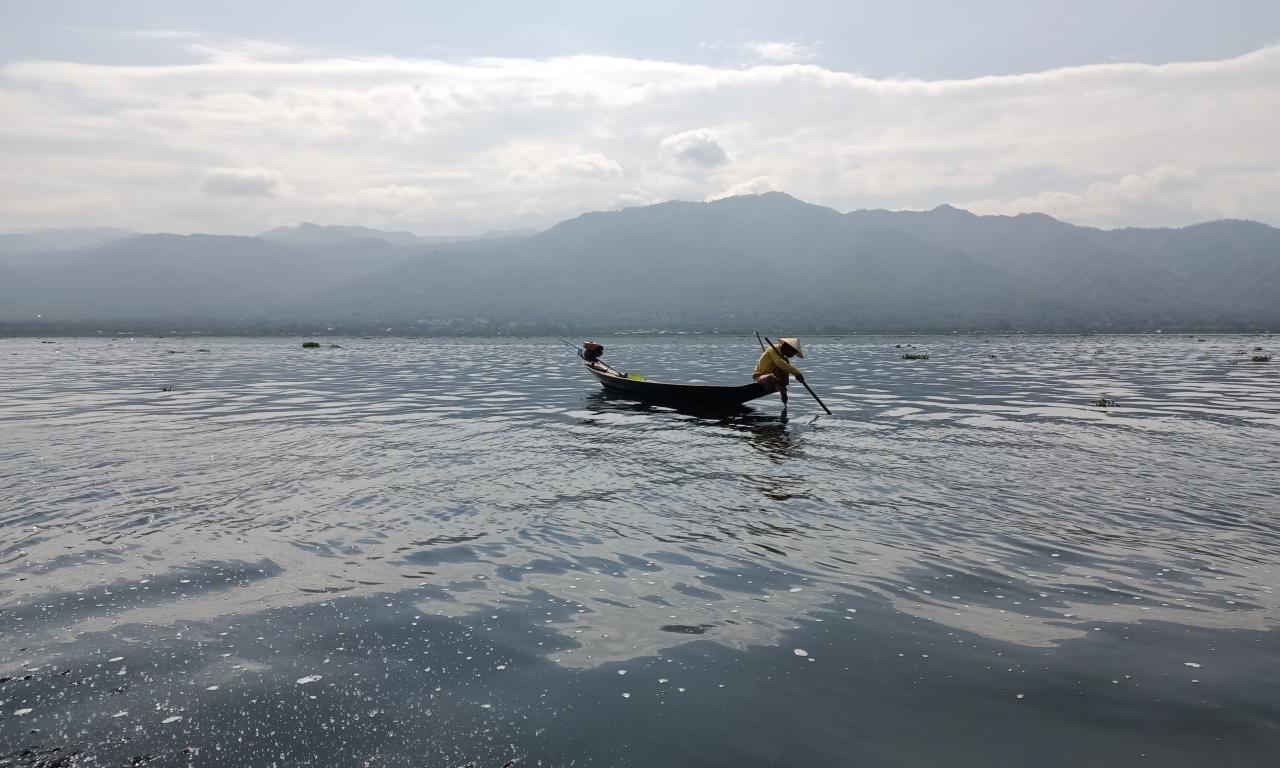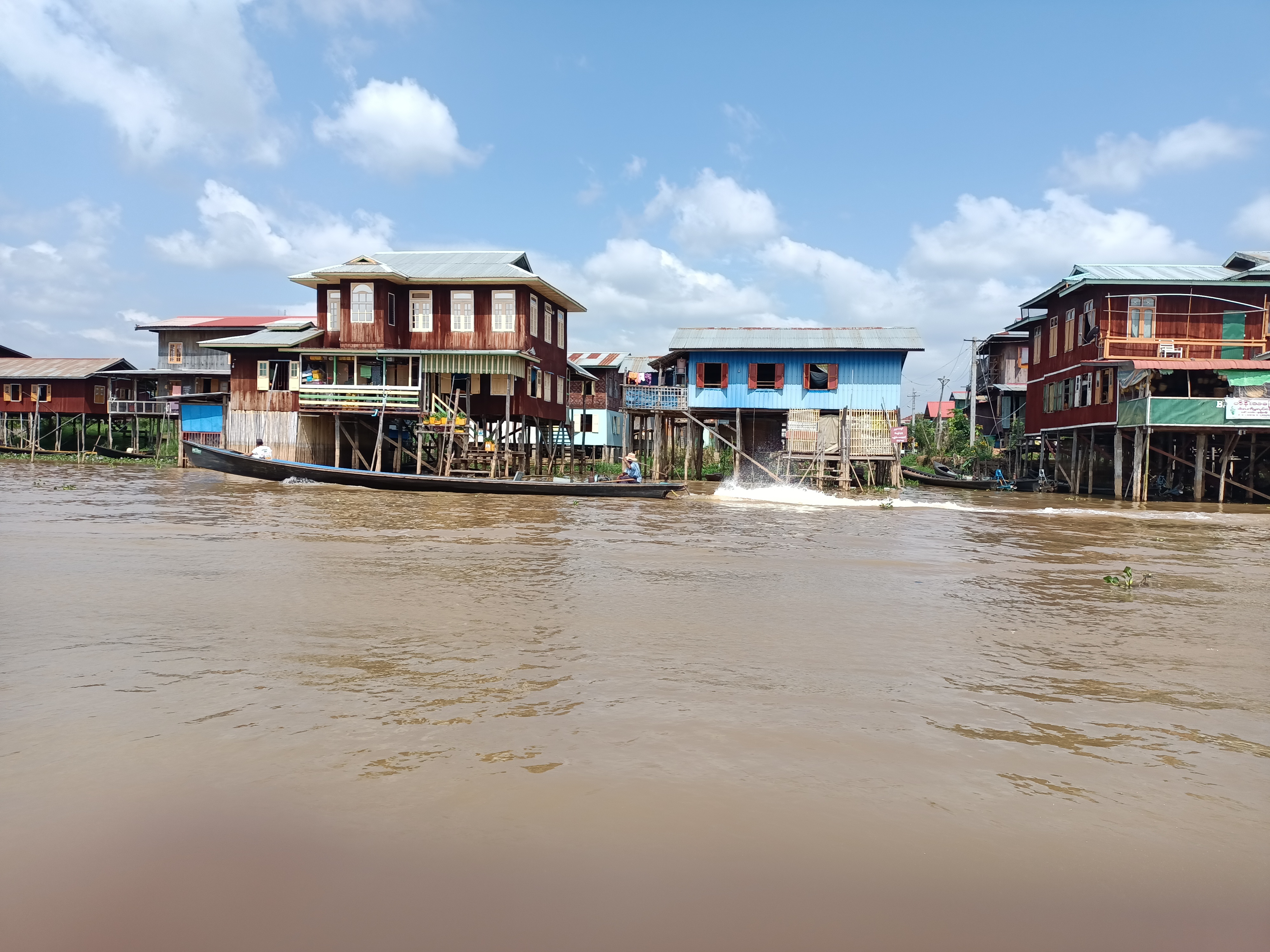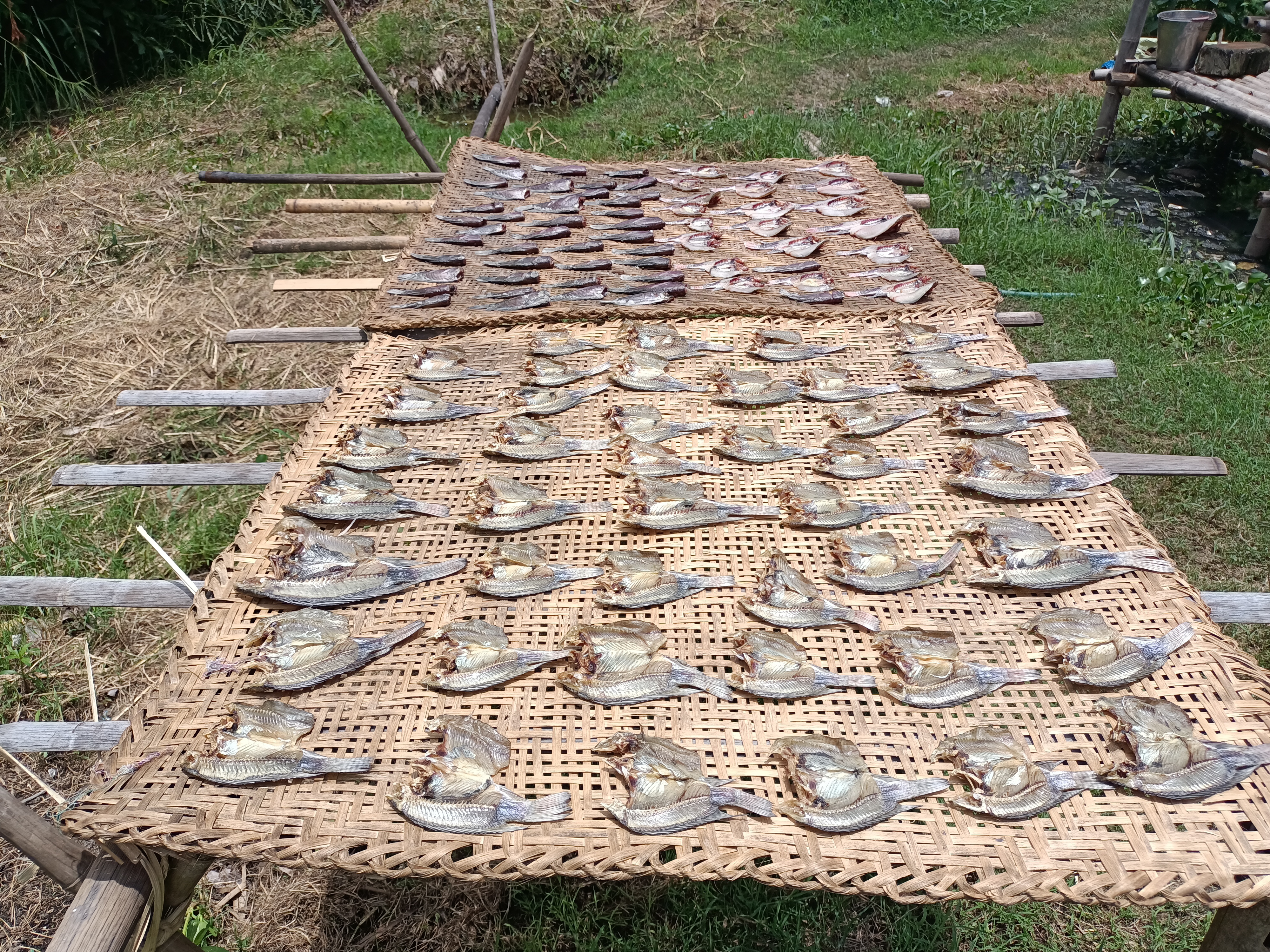
- The Fish for Livelihoods (F4L) project promotes the livelihoods of fisherfolk in Inle Lake by providing awareness about overfishing as well as improving their food and nutrition security.
- Recent environmental pressures are posing a threat to the fisherfolks and to the communities who live on the lake.
- A possible action to address these threats and challenges is by helping local communities in a way that is workable, acceptable and sustainable under the existing circumstances in Myanmar.
Inle Lake is located on the Shan Plateau in the Southern Shan State of Myanmar. With a surface area of roughly 116 square kilometers, it is the second-largest lake in Myanmar and the biggest in Shan State. At an elevation of 890 meters, it is also one of the highest in the country.
The lake serves as an important freshwater resource for the local residents. Most of the people living around the lake are from the Inthar and Kayan ethnic groups and their main source of income is either fishing or producing vegetables in floating gardens on the lake. Hence, the well-being of the Inle Lake fisherfolk depends heavily on the health of the lake’s ecosystem.
However, invasive species – both plant and animal – and deforestation activities nearby are causing deleterious effects on the lake’s ecosystem. The accumulation of silt is reducing the depth of the lake and the rapid growth of the exotic water hyacinth Pontederia crassipes adds to the sedimentation while blocking light needed by native aquatic plants from entering the water body. Coupled with the introduction of excessive nutrient inputs and pesticides from agriculture as well as sewage from untreated wastewater into the water body, it is evident that the lake is facing severe environmental pressure.
Fisherfolks have noticed a decline in as well as the composition of their catch year on year. High-value native species such as the Intha Carp, Cyprinus intha, were abundant in the past. However, their numbers have declined dramatically due to overfishing, cross-breeding with common carp and the dominance of the exotic African cichlid tilapia that was introduced to the lake. Fishing is no longer a year-round activity and has become seasonal depending on the depth of the lake and access to fishing grounds. This has gravely impacted the livelihoods of the fisherfolks.
Working with local fisherfolks to achieve a common goal

The conservation of Inle Lake is of utmost importance as it will help reverse the diminishing fish stocks and improve the livelihoods of the fisherfolks who depend on it. While there are many activities taking place to conserve Inle Lake, coordination between actors is lacking and enforcement is weak.
Through the Fish for Livelihoods (F4L) project funded by the United States Agency for International Development (USAID), WorldFish in Myanmar and partners have set up a working partnership with the Inle Lake Committee that was established by and comprised of the people from the Inn Thar and Kayan ethnic groups.
The committee focuses on conservation efforts at the lake, combating illegal fishing and cleaning plastic bags and other rubbish that end up in the lake. Their efforts are designed to reduce pollution and improve the water quality of the lake as well as increase the awareness of lake conservation among the people living close to the lake. The F4L project also educated the Inle Lake fisherfolk on the adverse effects of overfishing to safeguard the sustainability of Inle Lake fisheries.
Reducing overfishing by diversifying incomes of fisherfolk households

In addition, the project worked with the Inle Lake Committee to improve post-harvest processing by creating a revolving fund for fisherfolk. By improving post-harvest activities, waste can be reduced, translating to better livelihoods for the fisherfolk, especially women who are heavily involved in post-harvest.
The revolving fund also helps fisherfolks in increasing their household incomes through alternative livelihood activities. In September 2021, the project disbursed 14,625,000 MMK ($8,000) to 45 fisherfolk in three villages around Inle Lake with the help of the Inle Lake Committee.
In 2022, the project collaborated with the Myanmar Fisheries Federation (MFF), a private sector partner in Southern Shan, to sustain the revolving fund. The project disbursed a total of 18,720,000 MMK ($10,000) to 18, 15 and 12 fishers in Nyaung Won, Hae Lone and Inn Pyar villages, respectively for them to invest mainly in post-harvest activities including the production and sale of value-added fish products such as salted and dried fish as well as alternative income generating activities including aquaculture and homestead land-based vegetable gardens.
By diversifying the household income of fisherfolks, the tendency of overfishing is reduced and the sustainability of the Inle Lake fisheries is secured for generations to come.


